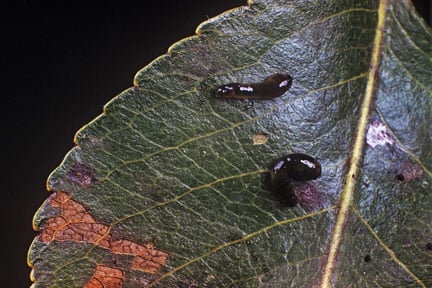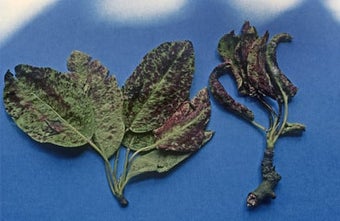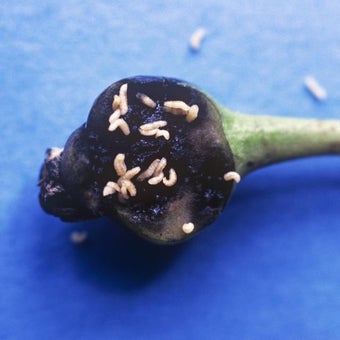
Quick facts
Common name - Pear and cherry slugworm
Scientific name - Caliroa cerasi
Plants affected - Pears, cherries, hawthorn, plum, cotoneaster, chaenomeles and sorbus
Main symptoms - The upper surface of leaves is grazed away and the grazed areas dry up and turn brown
Most active - June to October
What is pear and cherry slugworm?
Pear and cherry slugworms are the larvae of a . Sawflies are a group of insects suborder (Symphyta) of the Hymenoptera (bees, ants and wasps). There are about 500 species of sawfly in Britain. They have caterpillar like larvae that feed on plant material and are named after the saw-like egg laying organ used by females to lay eggs in plant material. Adults can come in a range of colours many are black, green orange or striped yellow and black. Most are small (< 1 cm) but some species such as the Birch sawfly (Cimbex femoratus) can be over 2 cm long. Several species can be found in gardens and are part of the a healthy garden will support. More information can be found at .
Adult pear and cherry slugworm have black bodies about 4-6 mm long and two pairs of transparent wings. Eggs are laid on the foliage and they hatch into larvae that are black with a slimy slug-like appearance. The larvae grow to a length of about 10 mm and are somewhat club-shaped with the head end being wider than the rear. When fully fed the larvae enter the soil to pupate.
There are two or sometimes three generations a year between June and October. The second generation in July and August can be the most obvious. Larvae that complete their feeding late in the year overwinter in cocoons in the soil before pupating in April to May of the following year.

Symptoms
The larvae feed by grazing away the upper surfaces of the leaves and the remaining portions of the grazed areas dry up and turn brown. Damage is usually insignificant and this should be treated as part of the a healthy garden supports.
Management
This species can be treated as part of garden . Very occasionally large numbers can affect the appearance of the trees but the long term heath, and on fruit trees the crop, is usually unaffected. The management options below will normally keep populations below this level.
- Tolerate populations of slugworm , sawflies can be part of the biodiversity a healthy garden supports. This species rarely affects cropping
- Encourage predators and other natural enemies of sawfly in the garden, such as birds and ground beetles
- Check plants regularly from April for the presence of larvae and remove by hand where practical




















